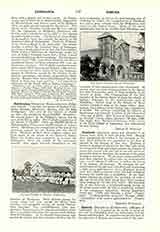

Zallwein, GREGOR, canonist, b. at Oberviechtach, Oberpfalz, October 20, 1712; d. at Salzburg, 6 or August 9, 1766. After studying the Humanities at Ratisbon and Freising he took vows at the Benedictine Abbey of Wessobrunn, on November 15, 1733, and was ordained priest on October 27, 1737. He studied canon law at Salzburg, 1737-9, became master of novices at his monastery in 1739, and prior in 1744. Upon the request of the Prince-bishop of Gurk, Joseph Maria Count of Thun, he was sent as professor of canon law to the newly-erected seminary at Strasburg in Carinthia. From 1749 till his death he was professor of canon law at the Benedictine University of Salzburg, where he held at the same time the office of “Rector magnificus” from 1759. Unlike most German canonists of his time, he laid great stress on the sources and historical development of canon law. Though his juristic writings are at times not clear, his lectures were valued very highly and attended even by students from foreign countries. His chief work is “Principia juris eccles. universalis et particularis Germaniae” (4 vols., Augsburg, 1763; 2nd ed. by Kleimayern, Augsburg, 1781; 3rd ed., Augsburg, 1831). His other canonical works are: “Disputatio prima de jure canonico…” (Salzburg, 1753); “Fontes originarii juris canonici, adjuncta historia.” (Salzburg, 1752 and 1755); “Jus eccles. particulare Germanise” (Salzburg, 1757); “Dissertatio de statu ecclesi, de hierarchia.” (Salzburg, 1757).
MICHAEL OTT

